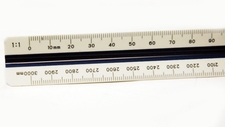Metric Measurements

TEKS Objective
The student is expected to collect, record, and analyze information using tools, including microscopes, cameras, computers, hand lenses, metric rulers, Celsius thermometers, wind vanes, rain gauges, pan balances, graduated cylinders, beakers, spring scales, hot plates, meter sticks, compasses, magnets, collecting nets, notebooks, sound recorders, and Sun, Earth, and Moon system models; timing devices, including clocks and stopwatches; and materials to support observation of habitats of organisms such as terrariums and aquariums.
Essential Understanding
The student knows how to use a variety of tools and methods to conduct science inquiry.
Science Background
Tools and Equipment of Science: BioEd Online (video) - Barbara Tharp, MS, explains what types of tools are used in the elementary classroom and how to introduce the proper usage of tools to students.
Tools and Equipment of Science
BioEd Online, www.bioedonline.org
Origin of the Metric System: US Metric Association – This site is an explanation of the Metric System and its history. The metric system is an internationally agreed set of units for measurement.
Origin of the Metric System
US Metric Association, lamar.colostate.edu/~hillger/usma.html
Signature Lesson
Metric Madness: K8Science (PDF) - This lesson enables students to use tools and apply the skills of estimation and metric measurement in an engaging format. Students rotate through stations or centers in groups. This lesson may be adjusted depending on measurement objectives of the grade level.
- Supporting Lessons
- Extensions
- Assessment Ideas
- Literature Connections
- Related
TEKS - Additional Resources
Supporting Lessons
Metric Measurement: Utah Education Network (website) – Students use a ruler and meter stick to measure the length of a variety of objects.
Metric Measurement
Utah Education Network, www.uen.org
What’s Your Wingspan? Science NetLinks (website) - Students gather and analyze data on their wingspan in an exploratory environment to review measurement and graphing. Questions for discussion are included.
What’s Your Wingspan?
Science NetLinks, www.sciencenetlinks.net
Estimation and Measurement: Science NetLinks (website) – In this lesson, students will first measure with the idea of units in mind and then be challenged to consider why it is important to have standardized units of measurement.
Estimation and Measurement
Science NetLinks, sciencenetlinks.com
Elaboration Lessons and Extensions
Balloon Blast: K8Science (PDF) - Students will devise a plan to measure the distance of a balloon's flight, predict the direction a balloon will travel as it deflates, experience Newton's Third Law (for every action there is an opposite, yet equal, reaction), collect relevant data, graph results, and draw conclusions.
Assessment Ideas
Measure the wingspan of your family members. Compare their span against their height. Do you see any patterns? Write a report on your findings.
Literature Connections
How Big is the Lion? Accorsi, William, (ISBN-13: 978-0761155409)
Measuring Penny, Leedy, Loreen, (ISBN-13: 978-0805065725)
How Big is a Foot? Myller, Rolf, (ISBN-13: 978-0440404958)
Me and the Measure of Things: (ISBN-13: 978-0440417569)
Length, Pluckrose, Henry, (ISBN-13: 978-0516454535)
Additional Resources
Metric Mania Lesson: The Science Spot (website) - A host of metric lessons that include labs on length, mass, volume, density, temperature and conversions activities.
Metric Mania Lesson
The Science Spot, sciencespot.net
Create a Graph: Kid’s Zone (website) - This website developed by the National Center for Education Statistics, allows teachers and students to create and print graphs for use in experiments. Five types of graphs are available in various patterns and colors. You can even title the graph and label the axis.
Create a Graph
Kid’s Zone, National Center for Education Statistics, nces.ed.gov
TEKS Navigation
Grade 3
Need Assistance?
If you need help or have a question please use the links below to help resolve your problem.

Comments